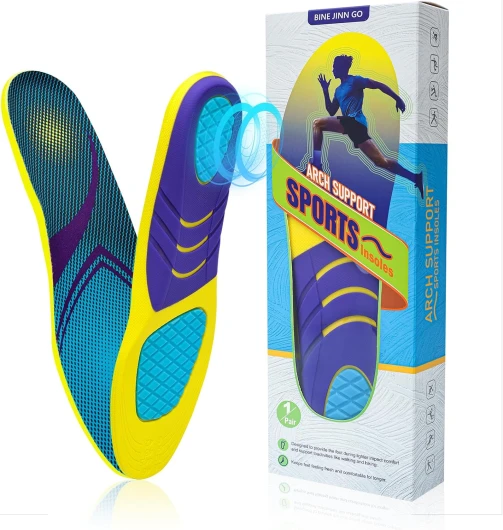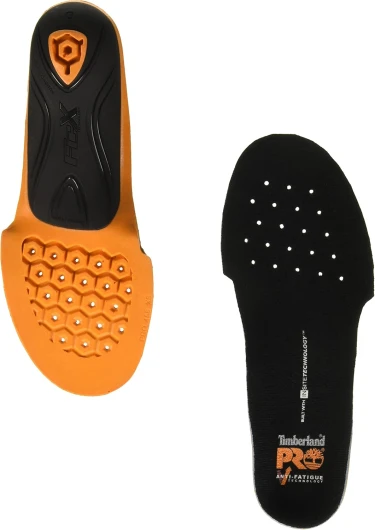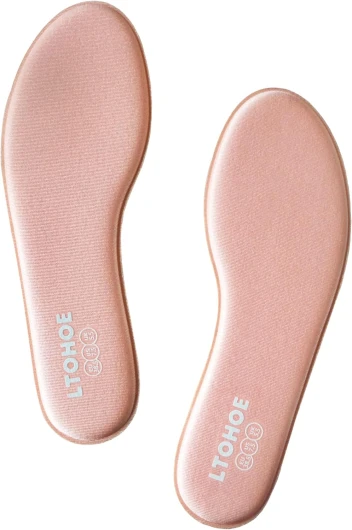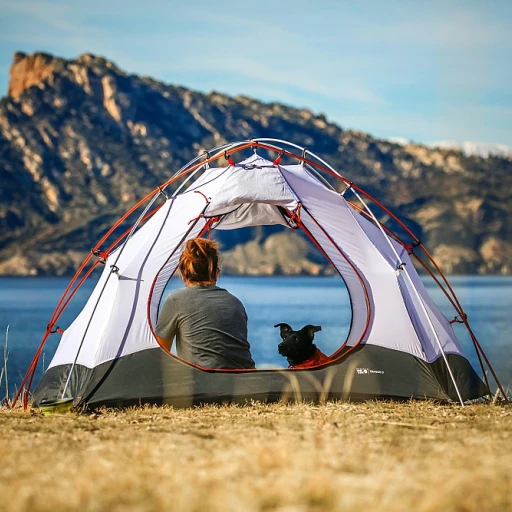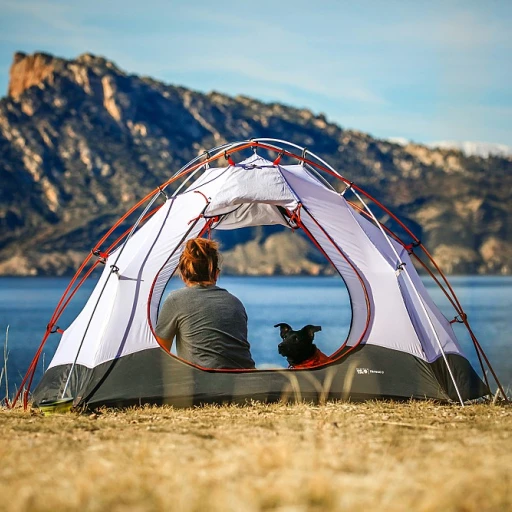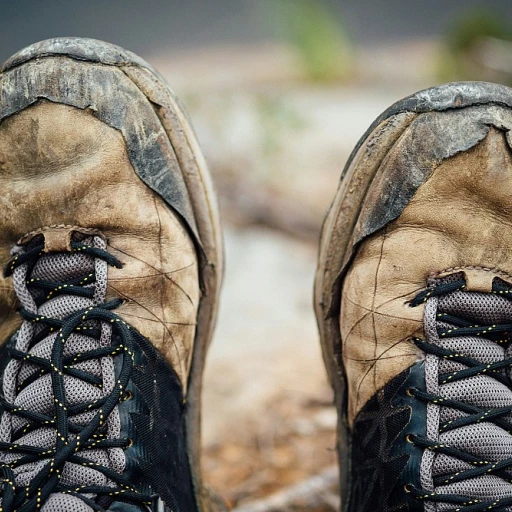
Understanding the Importance of Footbeds
Discovering the Essentials of Hiking Boot Footbeds
Footbeds, also known as insoles, play a crucial role in enhancing the comfort and support of your hiking boots. They are not just an accessory but a necessity that impacts your overall hiking experience and foot health. A well-chosen footbed can provide remarkable arch support and shock absorption, crucial for tackling rough terrains with confidence.
Understanding the anatomy of footbeds is essential when selecting the right one for your hiking needs. They are designed to provide a tailored fit for your feet, helping alleviate issues like plantar fasciitis. Whether you're dealing with high arches or require extra cushioning, the appropriate footbed can make a world of difference in comfort and support.
The market is rich with options, catering to different needs, from those seeking superior cushioning to those needing high arch height support. For instance, brands like Superfeet and Oboz are renowned for their quality and reliability in providing custom solutions that fit your hiking shoes perfectly.
Every step you take on a hiking adventure is a testament to the quality of your gear, especially your footbeds, which ensure enhanced performance and minimize impact fatigue. Their moisture-wicking properties also contribute to maintaining a dry and comfortable environment for your feet, vital on long hikes. A good insole is an investment in comfort and hiking longevity.
Types of Footbeds Available
Diverse Options for Optimal Support
When selecting footbeds for hiking boots, it's crucial to consider the variety of insoles available, each catering to different support needs and preferences. Whether you are looking for enhanced comfort, shock absorption, or superior arch support, there's a wide range of choices designed to offer specific benefits.
1. Superfeet Insoles: Renowned for providing excellent arch support, these insoles are available in various models tailored to high arch, medium high, and flat arches. Their deep heel cup helps stabilize the heel, reducing the risk of injuries during prolonged hikes.
2. Foam Insoles: Offering exceptional cushioning, foam insoles can mitigate the impact forces experienced during hiking. This type is particularly beneficial for individuals with sensitive feet or those prone to plantar fasciitis.
3. Custom Orthotics: For those with specific foot concerns or unique fit requirements, custom insoles provide comfort and personalized support. While they tend to be more pricey, the tailored fit can prove invaluable.
4. Moisture Wicking Insoles: Designed with a top layer that reduces moisture accumulation, these insoles enhance airflow within the shoes. By keeping the feet dry, hikers can avoid blisters and discomfort during long treks.
5. Oboz Insulation: These insoles boast superior hiking performance by focusing on stability and warmth. Ideal for cold-weather adventures, they provide both arch and heel support, making them a staple for winter hikers.
In conclusion, selecting the best insoles hinges on evaluating your specific needs, understanding the significance of cushioning options, and ensuring satisfaction with the comfort they deliver. With numerous choices on the market, you can find the perfect solution to enhance your hiking boots' performance and enjoy the trails with unparalleled ease.
Factors to Consider When Choosing Footbeds
Navigating Key Considerations for Choosing Insoles
When selecting the right insoles for your hiking boots, several crucial factors come into play to ensure optimal comfort and support. As you explore different options, understanding these aspects can significantly enhance your hiking experience.
Arch Support and Height
Your foot's arch height is a primary consideration when choosing footbeds. Whether you have a high arch or a more neutral foot, selecting insoles with appropriate arch support is essential. This not only provides stability but also reduces strain during long treks. Brands like Superfeet offer a range of options tailored for various arch heights, ensuring each step is well-supported.
Heel and Fit
The heel cup design is another vital element to consider. A deep heel cup enhances shock absorption, reducing the impact on your joints. Additionally, the overall fit of the insole plays a crucial role. Look for options that offer a snug fit within your hiking shoes to prevent slippage and cater to the natural contours of your feet.
Cushioning and Comfort
Choosing an insole that provides the right amount of cushioning can make a significant difference in comfort levels. Foam-based options offer great impact absorption, while some premium choices feature a custom fit to further enhance comfort. For those dealing with specific foot conditions like plantar fasciitis, prioritizing footbeds that offer targeted cushioning can provide much-needed relief.
Special Features
Keep an eye out for additional features like moisture wicking capabilities in the insoles, which can help keep your feet dry—an essential aspect for long days on the trail. Some insoles like Oboz provide innovative materials that cater to both comfort and functionality.
More insights into versatile footwear, along with a detailed exploration of trail moc options, can be found in this comprehensive guide.
How to Fit Footbeds Properly
Getting the Perfect Fit for Your Hiking Boots
When it comes to ensuring a comfortable hike, having the right fit for your footbeds is as crucial as the choice of hiking boots themselves. An ill-fitting insole can lead to discomfort, pain, or even injury, so getting the size and shape right is essential for your hiking experience.
To begin, take into consideration the arch of your foot. If you have a high arch, you'll require insoles with robust arch support, such as those offered by Superfeet insoles. For those with a lower or flat arch, opt for a medium-high or low arch support to maintain comfort while you trek. The right arch height will offer proper support and prevent strain on the foot.
Next, assess the heel cup. A deep heel cup is vital for stabilizing the heel, reducing the risk of sliding within the shoes. This design also optimizes shock absorption, minimizing the impact during hikes and reducing potential overuse injuries.
Moreover, try and test the insoles to establish whether the length and width align with your hiking boots. Brands like Superfeet hike offer insoles that might require trimming to fit your shoes snugly. Ensure the sole stays flat without curling at the edges once inserted.
Custom insoles can also be a fantastic option for those seeking individualized comfort tailored to specific arch support or heel requirements.
Finally, take note of the material used. Foam insoles are known for excellent cushioning but might lack durability compared to more resilient options. Choose insoles that offer moisture-wicking properties to keep your feet dry, especially for long treks.
Incorporating these considerations into your insole fitting process will ensure leisurely hikes while maintaining headway in hiking shoes designed perfectly for your adventures.
Top Brands and Recommendations
Exploring Leading Brands for Optimal Support
Choosing the ideal footbed involves not just understanding their types and fitting them correctly but also knowing which brands offer the best options for support, comfort, and durability.- Superfeet: Known for their focus on podiatric health, Superfeet insoles are highly recommended for those requiring enhanced arch support. Their Superfeet Hike line, equipped with deep heel cups and robust foam padding, offers excellent cushioning to absorb impact and reduce foot strain during long hikes.
- Oboz: Recognized for their superior fit and comfort, Oboz provides durable insoles perfect for hiking boots. Their designs often incorporate moisture-wicking top layers that ensure dry feet, reducing the risk of discomfort and blisters.
- Sole Active: Emphasizing adaptability and custom comfort, Sole Active insoles offer medium-high arch support suitable for various foot types. With a focus on shock absorption, these insoles help mitigate the pressure exerted on feet during high-impact activities like hiking.
Maintenance Tips for Longevity
Caring for Your Hiking Boot Footbeds
Proper maintenance of your insoles is essential to ensure they provide the best support, comfort, and fit over time. Following these simple care tips will help extend the life of your footbeds.- Regular Cleaning: Routinely remove your insoles from your hiking boots to clean them gently. Use a mild soap and water solution to wash them, particularly the top layer, which can accumulate dirt and sweat. Avoid using harsh chemicals that could affect the foam or cushioning.
- Dry Completely: After cleaning, ensure your insoles are thoroughly dried before placing them back into your boots. Leaving them damp can lead to bacterial growth and odors. Air-dry your insoles in a well-ventilated area, avoiding direct sunlight or high heat sources.
- Check for Wear: Regularly inspect your insoles for signs of wear and tear, such as thinning in the arch or heel area. Over time, even high-quality products like Superfeet insoles will need replacing to maintain proper arch support and shock absorption, essential for hikers and those with plantar fasciitis.
- Rotate Between Sets: If you hike frequently, consider purchasing an additional set of insoles. Alternating between pairs allows each to recover between hikes, extending their life and providing consistent support on every journey.
- Consider Usage Habits: Think about how often and how intensely you engage in hiking activities. Heavy use on rough terrains might necessitate more frequent replacement than casual hikes. Custom insoles or high-quality options, such as those from Oboz, typically offer greater durability under strenuous conditions.
- Store Away from Moisture: When not in use, keep your insoles away from damp environments. Moisture can lead to breakdown of materials over time, impacting their structural integrity and effectiveness.

